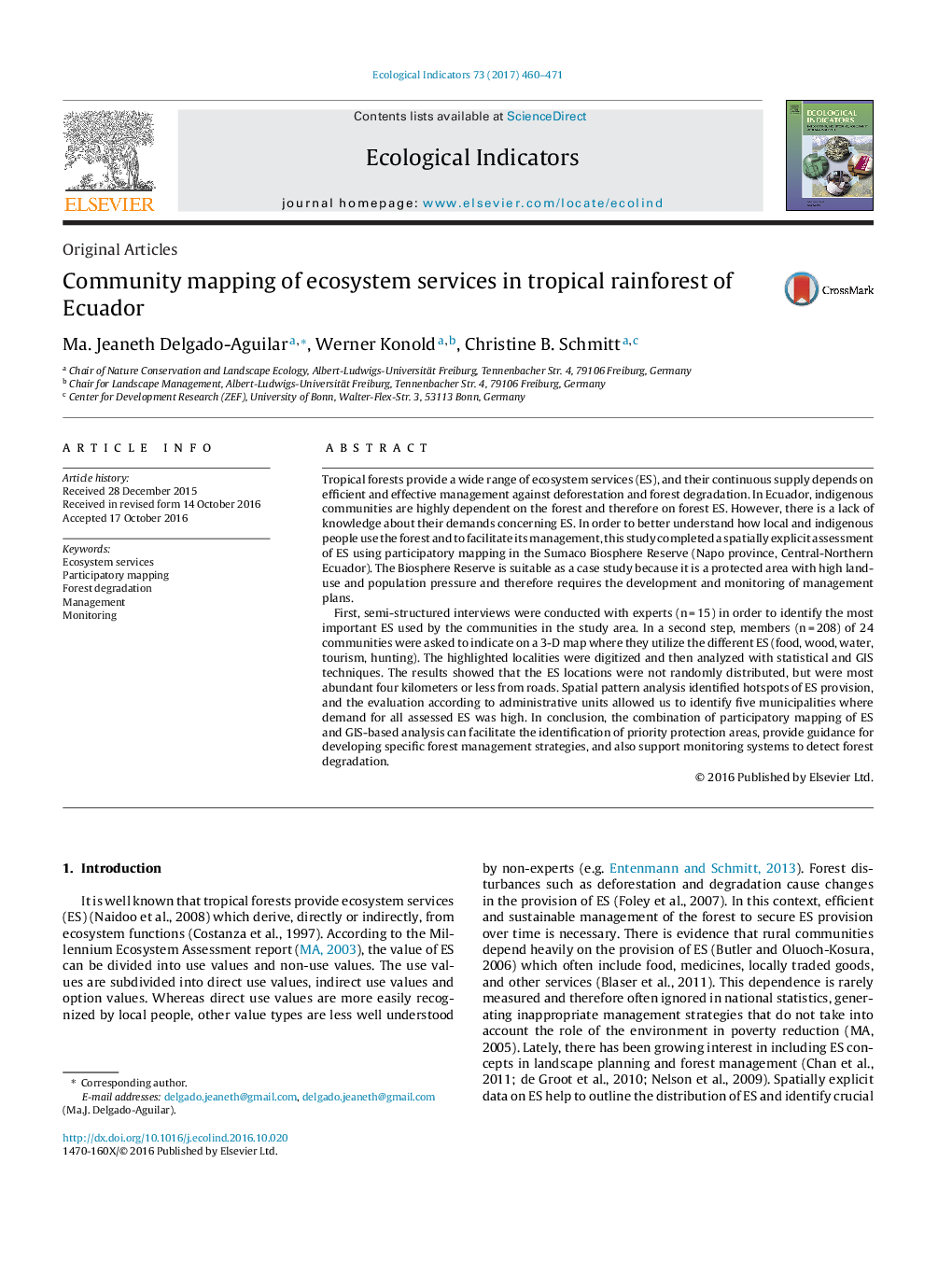| Article ID | Journal | Published Year | Pages | File Type |
|---|---|---|---|---|
| 6292622 | Ecological Indicators | 2017 | 12 Pages |
Abstract
First, semi-structured interviews were conducted with experts (n = 15) in order to identify the most important ES used by the communities in the study area. In a second step, members (n = 208) of 24 communities were asked to indicate on a 3-D map where they utilize the different ES (food, wood, water, tourism, hunting). The highlighted localities were digitized and then analyzed with statistical and GIS techniques. The results showed that the ES locations were not randomly distributed, but were most abundant four kilometers or less from roads. Spatial pattern analysis identified hotspots of ES provision, and the evaluation according to administrative units allowed us to identify five municipalities where demand for all assessed ES was high. In conclusion, the combination of participatory mapping of ES and GIS-based analysis can facilitate the identification of priority protection areas, provide guidance for developing specific forest management strategies, and also support monitoring systems to detect forest degradation.
Related Topics
Life Sciences
Agricultural and Biological Sciences
Ecology, Evolution, Behavior and Systematics
Authors
Ma. Jeaneth Delgado-Aguilar, Werner Konold, Christine B. Schmitt,
